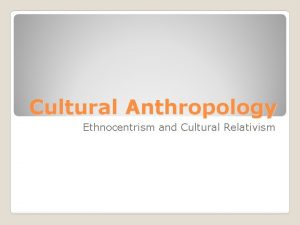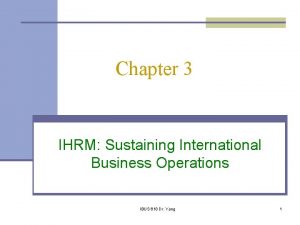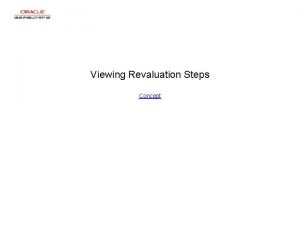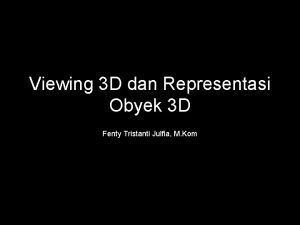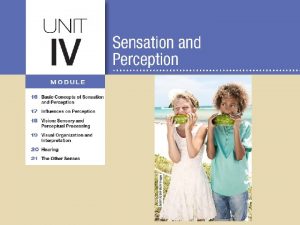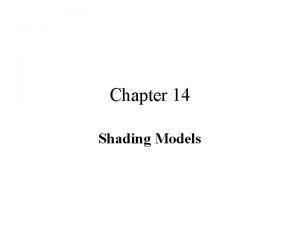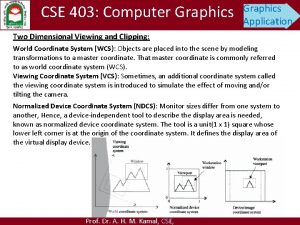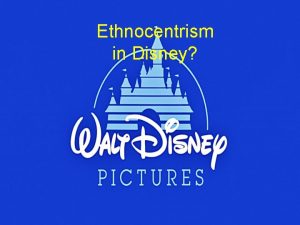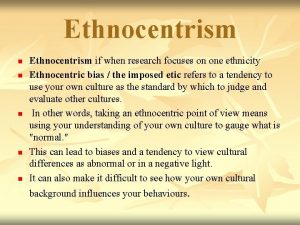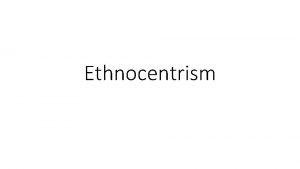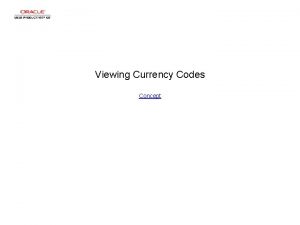Ethnocentrism and Ethnorelativism What is Ethnocentrism Viewing other




















- Slides: 20

Ethnocentrism and Ethnorelativism

What is Ethnocentrism? Ø Viewing other cultures and making judgments based on what is normal in your own experience and culture. Ø This makes an assumption that one’s own culture is superior to others. • Someone with an ethnocentric view might describe a practice from another culture as “weird” or “wrong” because they are using their own frame of reference (what they think is normal) to judge something they are not familiar with.

An Ethnocentric view • Example: In France they drive on “the wrong side” of the road. Ø In Ireland cars are driven on the left-hand side. In most of Europe, cars are driven on the righthand side. Someone viewing this practice from an Irish ethnocentric view may consider this “wrong” because it is different to the custom in their experience in Ireland.

Ethnocentrism

What is Ethnorelativism (or cultural relativism)? Ø Considering cultural practices as relative to context rather than imposing our own frame of reference (judging based on our experience). • Someone with an ethnorelative view will try and think about a cultural practice from the perspective of the culture in question rather than judging based on their own experience.

An Ethnorelative view • Example: In Arabic the writing is different to English and other European languages as you read from right to left. Ø Rather than viewing writing from right to left as “wrong” the person views it simply as different. They recognise that their own culture is one of many cultures with different practices and traditions.

Ethnocentric Vs. Ethnorelative Ethnocentric Ethnorelative • Judging other cultures using your own experience as a measure of what is normal. • Anything outside of your experience or knowledge is judged abnormal, weird or wrong. • Considering other cultures and practices relative to the context. • Not imposing a judgement based on the experience and knowledge of your culture.

Ethnocentrism and Cultural Relativism • https: //www. youtube. com/watch? v=a. Q 9 m. Dl. L bz. GA • Culture can be related to food, religions, celebrations, clothes, behaviour, values, language, customs, traditions… • Can you think of other examples where people might view practices from another culture as “wrong” or “weird”?

Where do we see this in practice? • Have you ever noticed that travel guide books often have information about cultural practices and behaviour that is considered disrespectful? Ø This information is provided to develop awareness about different practices and beliefs, in other words to help people develop intercultural competence.

What is intercultural competence? Ø Intercultural competence is the ability to communicate effectively and appropriately with people of other cultures. • Test your intercultural competencies! http: //www. areyouintercultural. eu

Milton Bennett’s Model of Intercultural Sensitivity

What’s the idea? • Based on Bennett’s research the model attempts to explain different stances people can inhabit on a spectrum from an ethnocentric viewpoint to an ethnorelative one. Ø With experience and knowledge of cultural differences, people may move along the spectrum and their ability to engage in respectful intercultural communication is enhanced. They will improve their intercultural competence.

Denial • Denial of cultural difference indicates an experience in which cultural difference is not perceived at all, or it is perceived only in very broad categories such as "foreigner" or "minority. " The constructs available for perceiving one's own culture are far more complex than those available for other cultures. Individuals experience psychological and/or physical isolation from cultural difference. Ø People are disinterested or perhaps even hostilely dismissive of intercultural communication.

Defense • Defense against cultural difference indicates an experience in which cultural difference is perceived in stereotyped and polarized ways. Cultures are organized into "us and them, " where typically the "us" is superior and the "them" is inferior. Ø People at Defense are threatened by cultural difference, so they tend to be highly critical of other cultures and apt to blame cultural difference for general ills of society.

Reversal • Reversal, one's own culture is heavily criticized, while other cultures are perceived in relatively non-critical, romanticized ways. The intercultural worldview is still polarized, but the poles are reversed. Ø People at defense view other cultures as better than their own.

Minimization • Minimization of cultural difference indicates an experience in which elements of one's own cultural worldview are perceived as universal. Ø People assume that their own physical or psychological experiences are shared by people in all cultures, and/or that certain basic values and beliefs transcend cultural boundaries. Ø The stressing of cross-cultural similarity reduces Defense, so people here are much more tolerant of superficial cultural diversity. Ø However, Minimization obscures deep cultural differences, including the masking of dominant culture privilege by a false assumption of equal opportunity ie. The assumption is made that everyone has the same opportunity to access resources like schools or jobs even though this may not be the case as a result of cultural difference eg. having a different religion

Acceptance • Acceptance of cultural difference indicates an experience in which one's own culture is experienced as just one of a number of equally complex worldviews. Acceptance does not mean agreement - cultural difference may be judged negatively - but the judgment is not ethnocentric. Ø People at Acceptance are curious about and respectful toward cultural difference, but their knowledge of other cultures does not yet allow them to easily adapt their behavior to different cultural contexts.

Adaptation • Adaptation to cultural difference indicates the experience of generating appropriate alternative behavior in a different cultural context. Adaptation involves intercultural empathy, or experiencing the world to some extent "as if" one were participating in the different culture. This imaginative participation generates "feelings of appropriateness" that guide the generation of authentic behavior in the alternative culture. Ø People at adaptation can enact their intercultural sensitivity as intercultural communication competence.

Integration • Integration of cultural difference indicates an experience of self that is expanded to include the movement in and out of different cultural worldviews. Ø People with a predominant Integration position often are dealing with issues related to their own "cultural liminality, " or in-betweeness. This liminality can be used to construct cultural bridges and to conduct sophisticated crosscultural mediation.

What do you think of this model?
 Difference between ethnocentric and polycentric approach
Difference between ethnocentric and polycentric approach What is ethnocentrism in culture
What is ethnocentrism in culture Advantages and disadvantages of ethnocentrism
Advantages and disadvantages of ethnocentrism Parochialism and ethnocentrism
Parochialism and ethnocentrism Calim of policy
Calim of policy Half vier
Half vier Film as text
Film as text Eccentric viewing techniques occupational therapy
Eccentric viewing techniques occupational therapy For viewing tiny objects in a microscope, diffraction is
For viewing tiny objects in a microscope, diffraction is Thank you for viewing my presentation
Thank you for viewing my presentation Steps in viewing
Steps in viewing Contoh viewing 3d
Contoh viewing 3d Viewing transformation pipeline
Viewing transformation pipeline Viewing coordinate sering juga disebut
Viewing coordinate sering juga disebut Narmeen is viewing the board in the classroom
Narmeen is viewing the board in the classroom Viewing pipeline
Viewing pipeline Projection in computer graphics
Projection in computer graphics 3d viewing devices in computer graphics ppt
3d viewing devices in computer graphics ppt In two dimensional viewing system have
In two dimensional viewing system have Exterior clipping
Exterior clipping What process occurs
What process occurs

